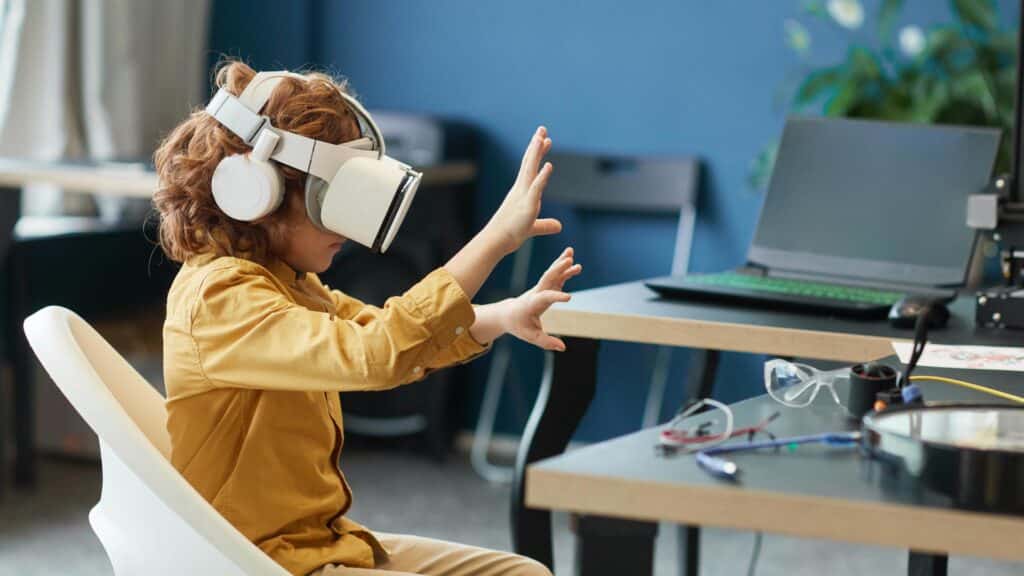Technology has revolutionized the world, and the education sector will not be left behind. Extended Reality (XR) refers to an immersive technology that merges virtual and real-life environments to create a new form of experience. It includes Virtual Reality (VR), Augmented Reality (AR), and Mixed Reality (MR). While most people are apprehensive about the advancement of technology, XR has the potential to transform education, especially for children in K-6 grades.
XR helps students learn by creating a virtual, immersive environment that engages students and improves their understanding and retention. It creates an interactive and realistic platform where learners can experience situations, manipulate objects, and receive immediate feedback from their teachers. This technology is an amazing tool that can link children in urban areas to children all over the world. In some ways, this tool can be viewed as one that brings people together.
This technology will transform education in ways like few others have ever done before. One way XR can transform education is through the application of VR in science classes. Traditional classroom teaching presents challenges when communicating complex scientific concepts, such as outer space, cellular biology, and molecular structures. With XR, teachers can create immersive simulations that enable students to visualize and interact with these concepts, resulting in more profound levels of comprehension.
Similarly, XR can be used to teach history. For example, students can experience the Battle of Waterloo by using AR to overlay the scene on top of a modern-day map. It could allow students to see what Napoleon was seeing and gain a better understanding of the historical event. In many ways, the students will feel as if they were actually there witnessing the battle as an eyewitness.
As an ardent student and lover of languages, it’s exciting that XR can also be used to create an interactive learning experience for language classes. For instance, by incorporating VR, teachers can take students on a field trip to Paris or Mexico City without leaving the classroom. Such an experience could provide students with exposure to new cultures and develop language skills.
Apart from helping students learn new things, XR technology can benefit students in urban areas by providing them with access to resources and experiences that are not available in their communities. For instance, VR technology can help simulate different socioeconomic and cultural backgrounds, allowing children to gain a better understanding of people from different backgrounds, which is vitally important for children and their overall growth and development.
Early adoption of XR technology can help advance children’s education by providing them with unique and interactive learning experiences that are not available with traditional classroom instruction. By providing teachers with access to XR technology, they can engage students by providing a hands-on and immersive learning experience. Students who learn through XR technology have shown increased engagement and interest in learning, improved recall of information, and better problem-solving skills.
XR technology also has the potential to reduce the achievement gap between students in urban areas and students in more affluent areas. Children in urban areas often lack access to high-quality education or resources that are more commonly available in affluent areas. By incorporating XR technology into the classroom, students in urban areas can have access to the same resources and experiences as their counterparts in more affluent areas.
XR technology is here to stay, and it has the amazing potential to transform education, especially for children in their elementary fundamental learning years. It provides an immersive and interactive platform that promotes better engagement, understanding, and retention of information. Educators can leverage this technology to provide students with unique and interactive learning experiences that are not achievable with traditional classroom instruction. This is the wave of the future.
I can clearly remember when the World Wide Web was introduced and how so many people took their time before they engaged. For many, that stalling cost them tremendously as their early adopter counterparts profited financially, educationally, career-wise, and even relationally. Don’t stall on this technology. Get the benefits early on! Early adoption of XR technology can help reduce the achievement gap in urban areas, something that so many initiatives have failed to do over the past two decades. The time is now. Embrace it, learn from it, and grow.
Dr. Aaron Lewis, September 25, 2023
References:
- Gamification and Virtual Reality (VR) in Education (2019). International Journal of Emerging Technologies in Learning.
- Virtual Reality in K-12 Education: The New Frontier? (2019). eSchool News.
- How Extended Reality (XR) is Transforming Education (2021). LinkedIn Learning.
- The Use of Mixed Reality in STEM Education: A Review of the Literature (2020). Journal of Educational Technology and Society.
- Augmented Reality and Learning Process Revolution in Education (2021). International Journal of Emerging Technologies in Learning.

